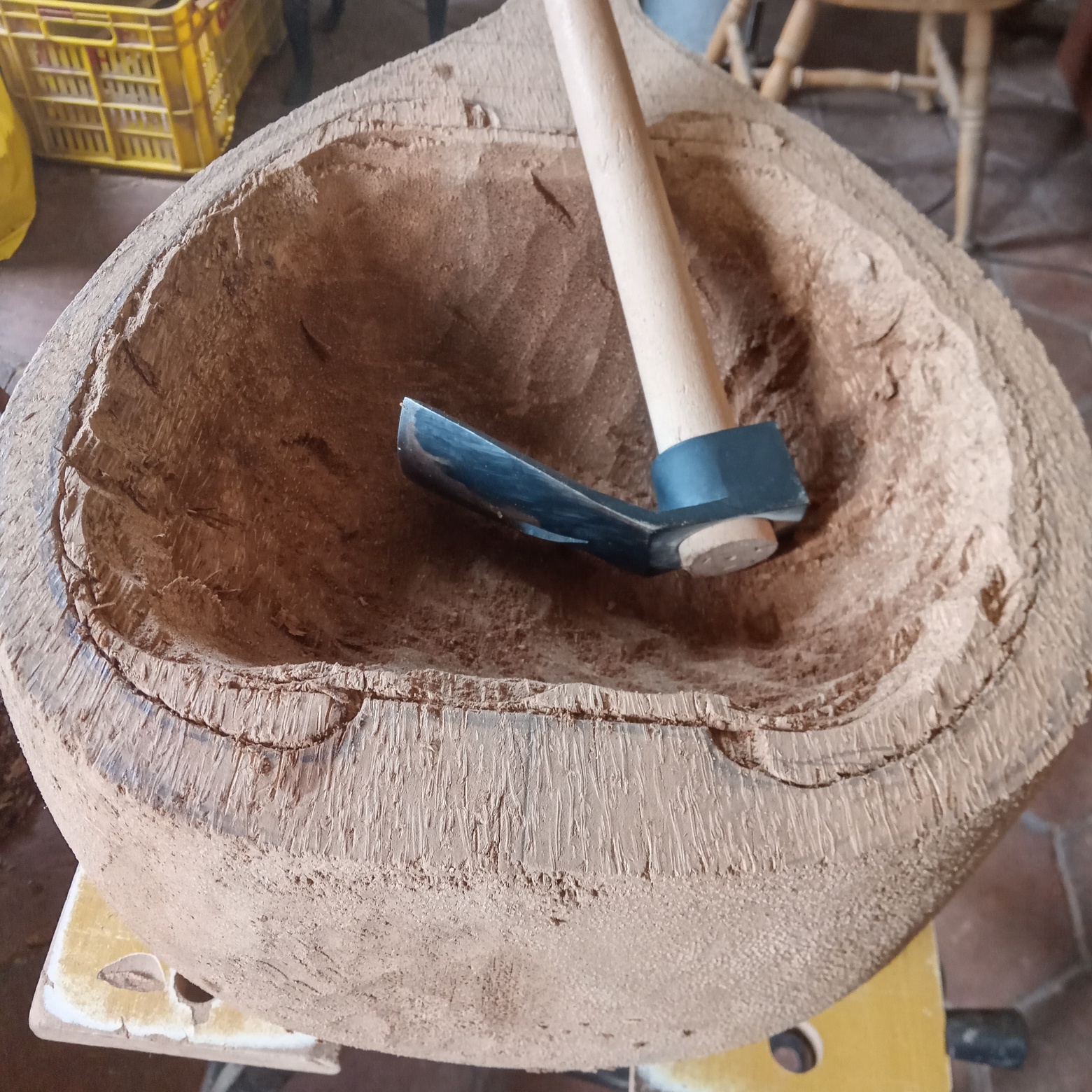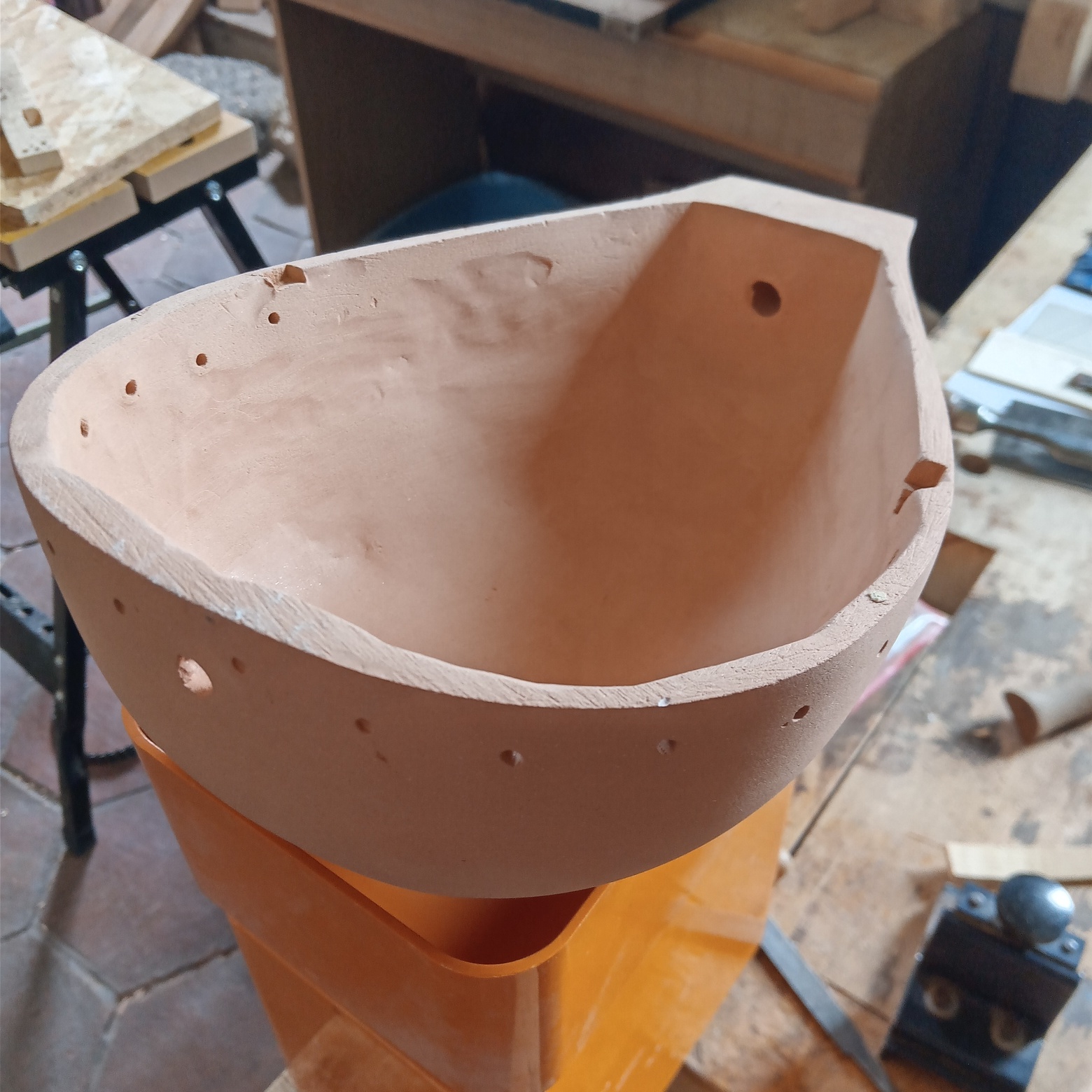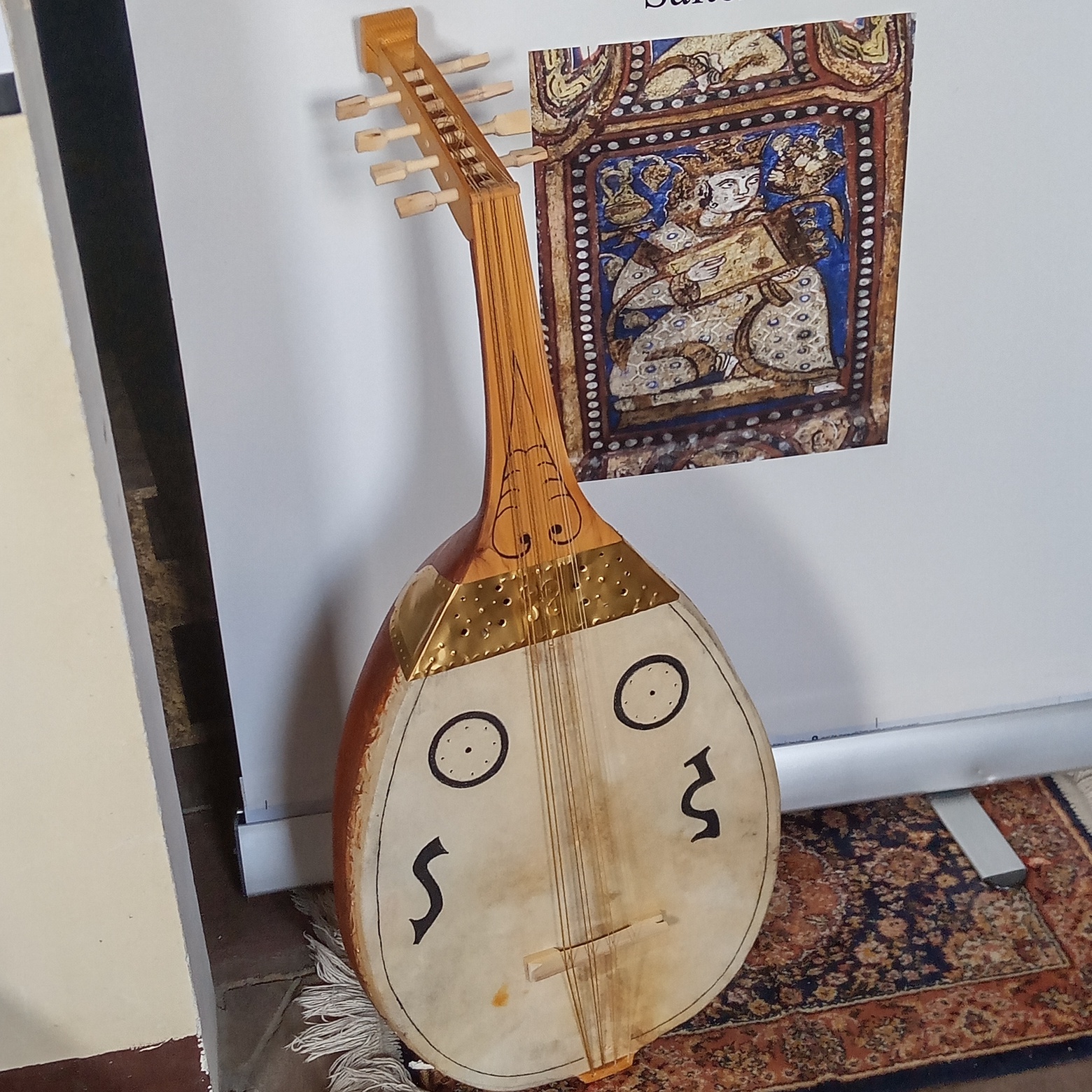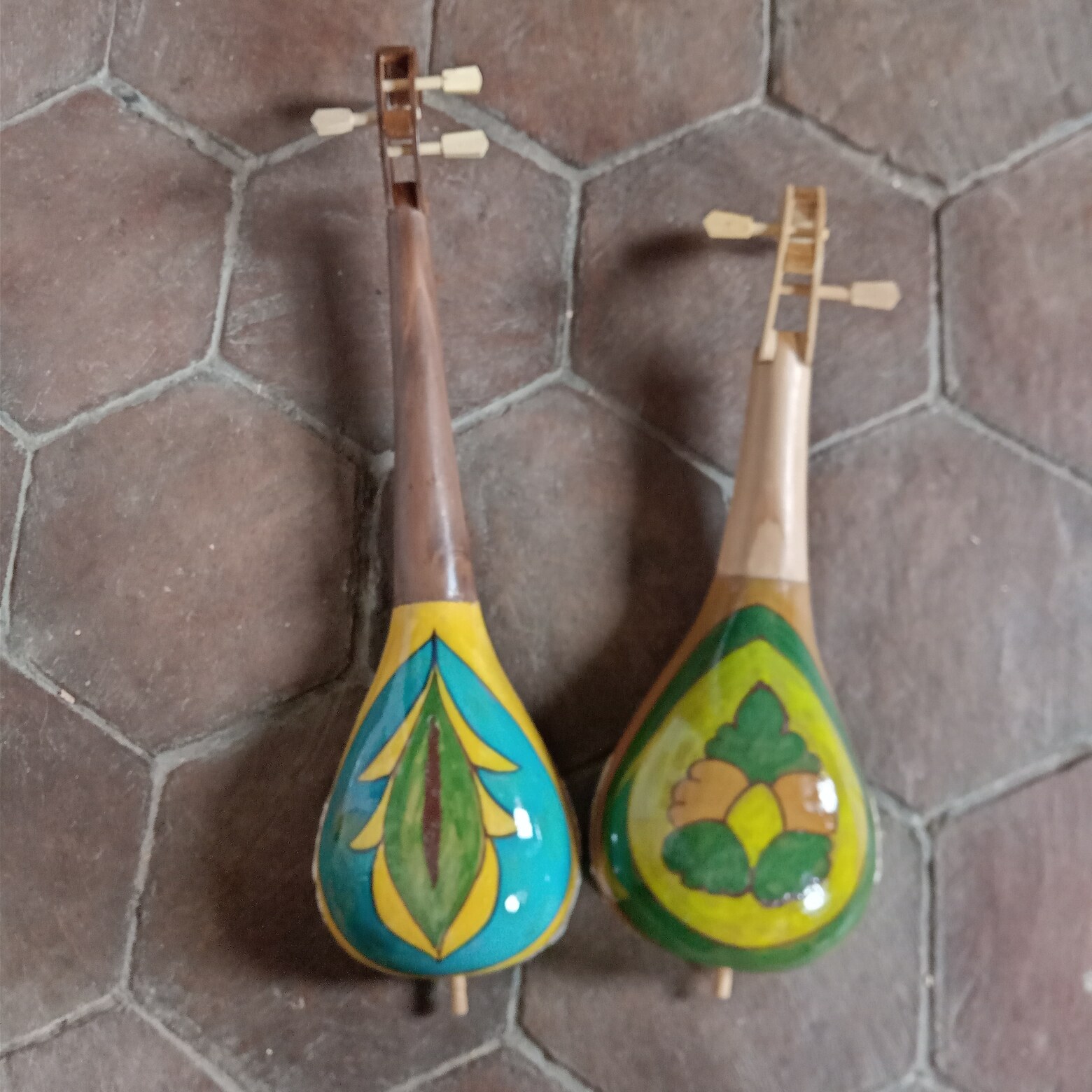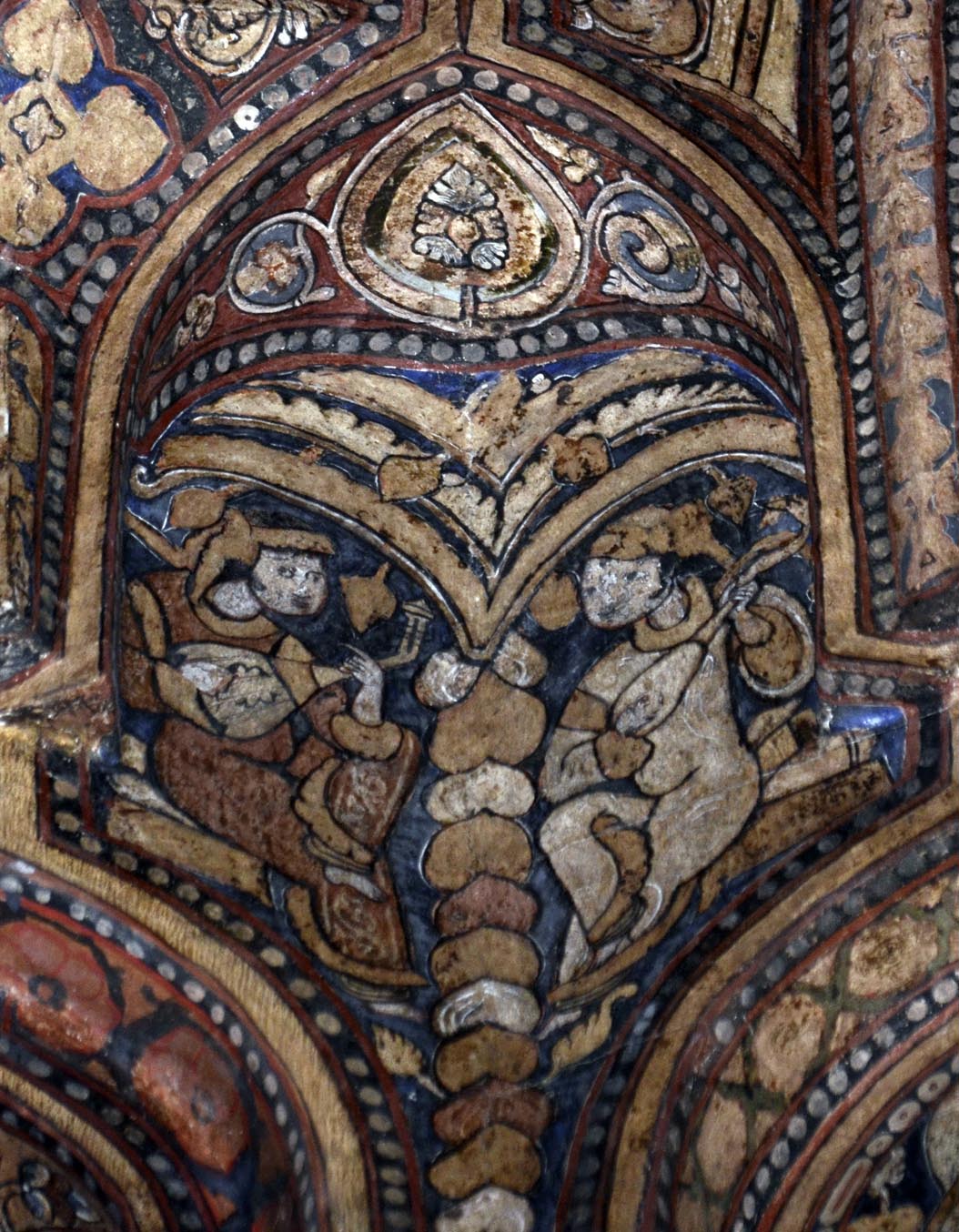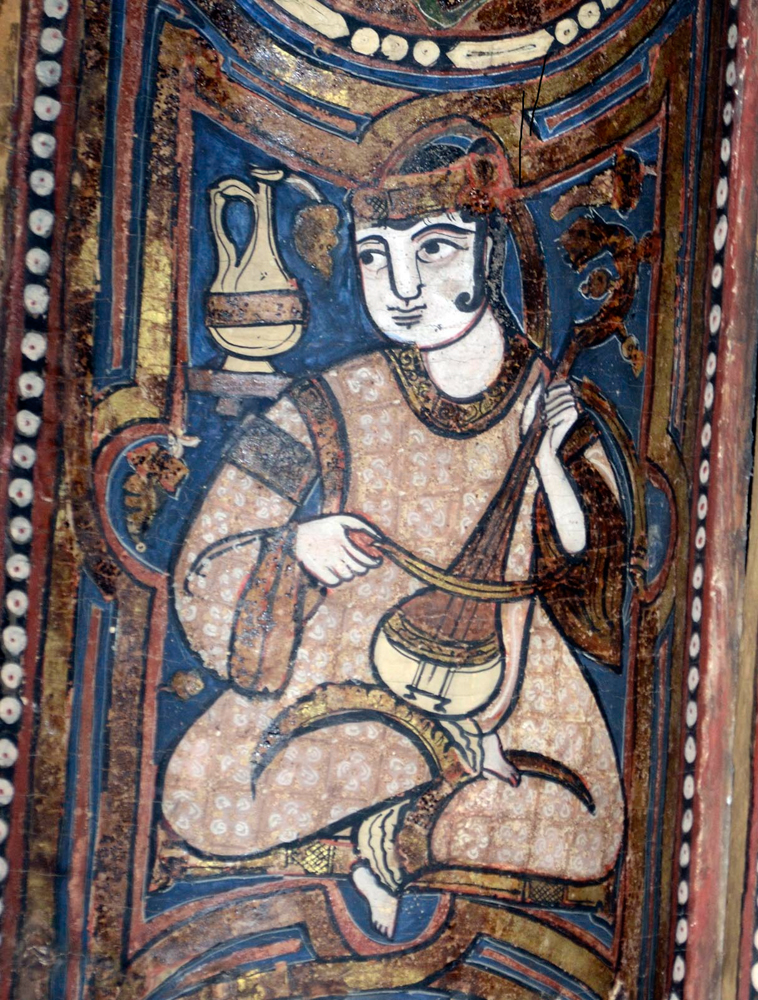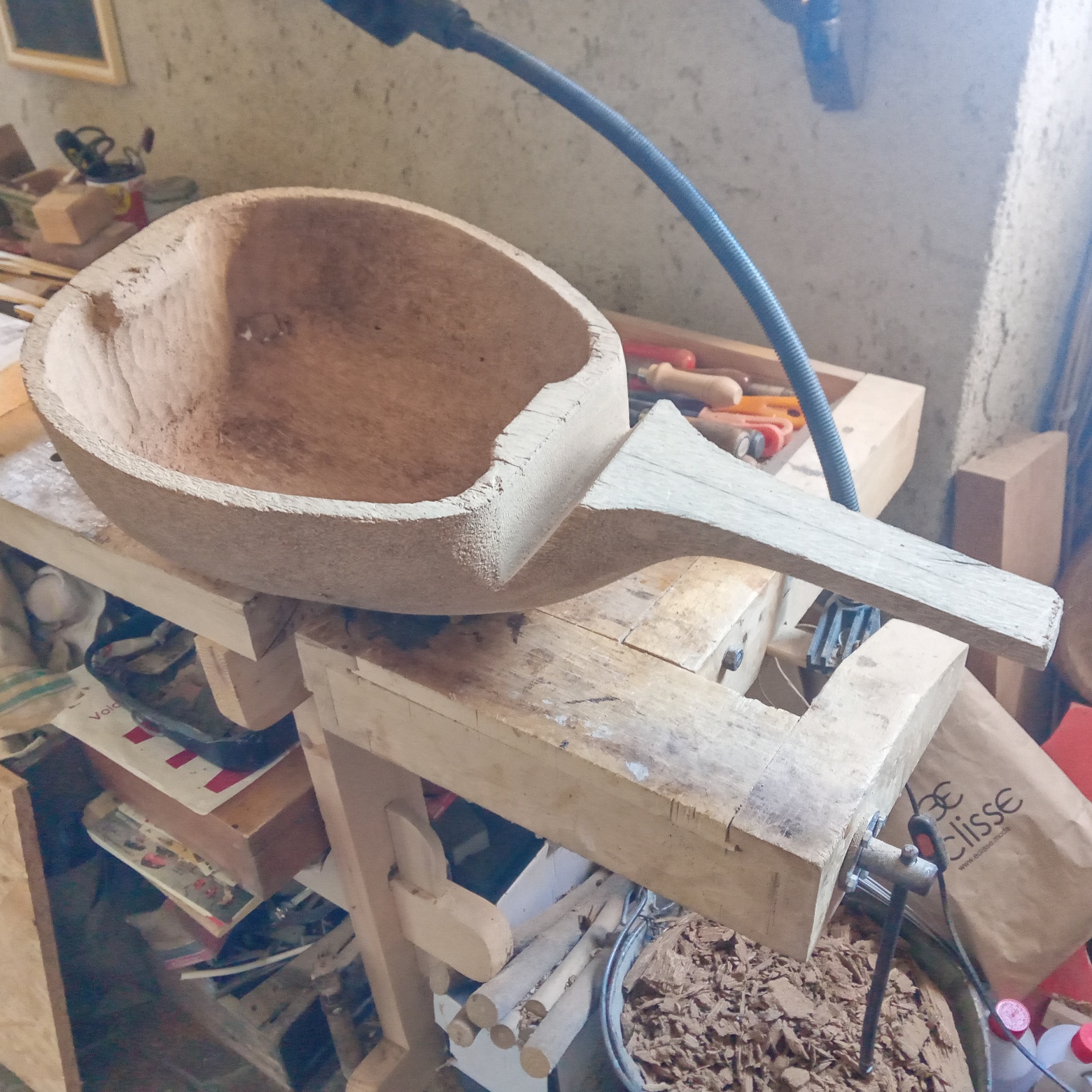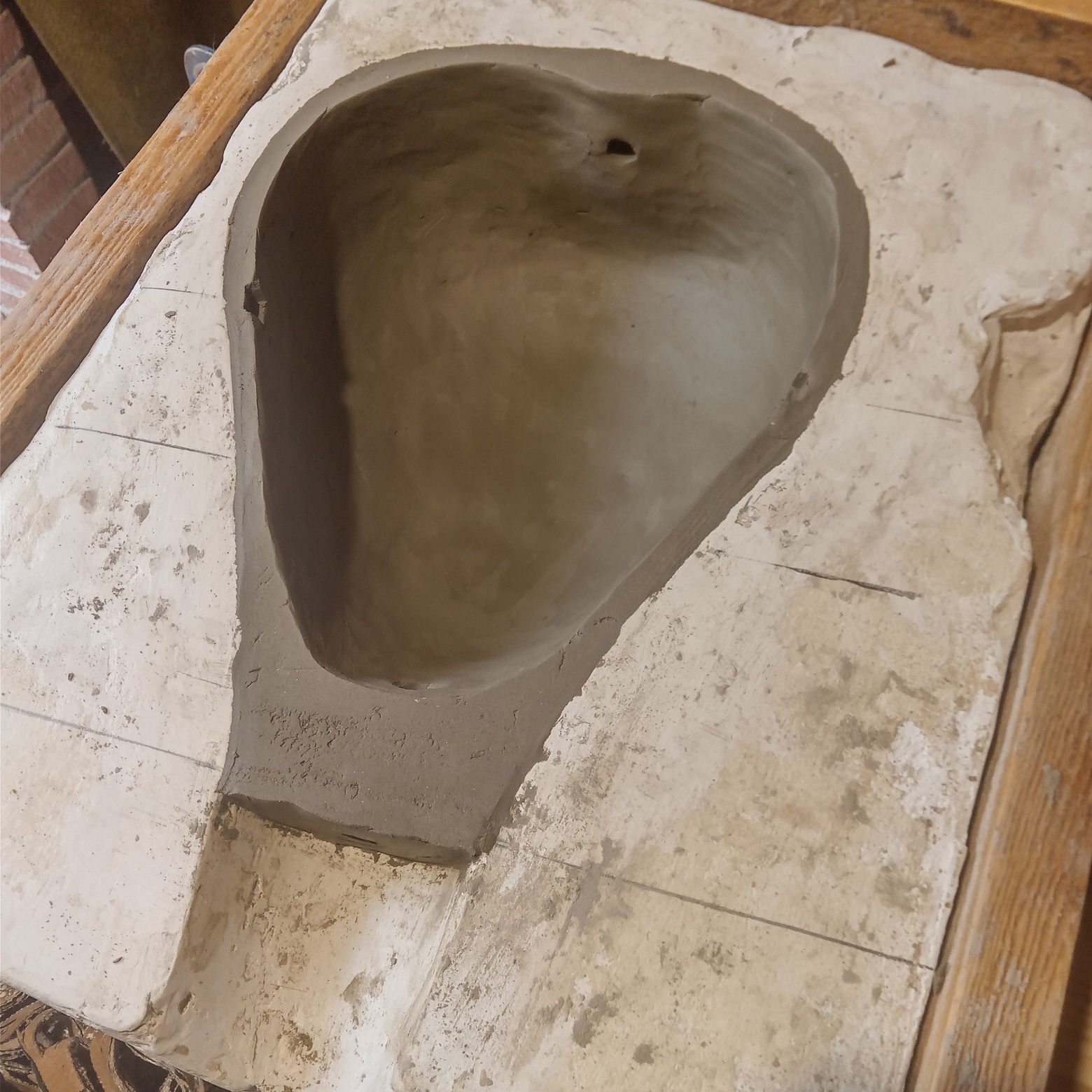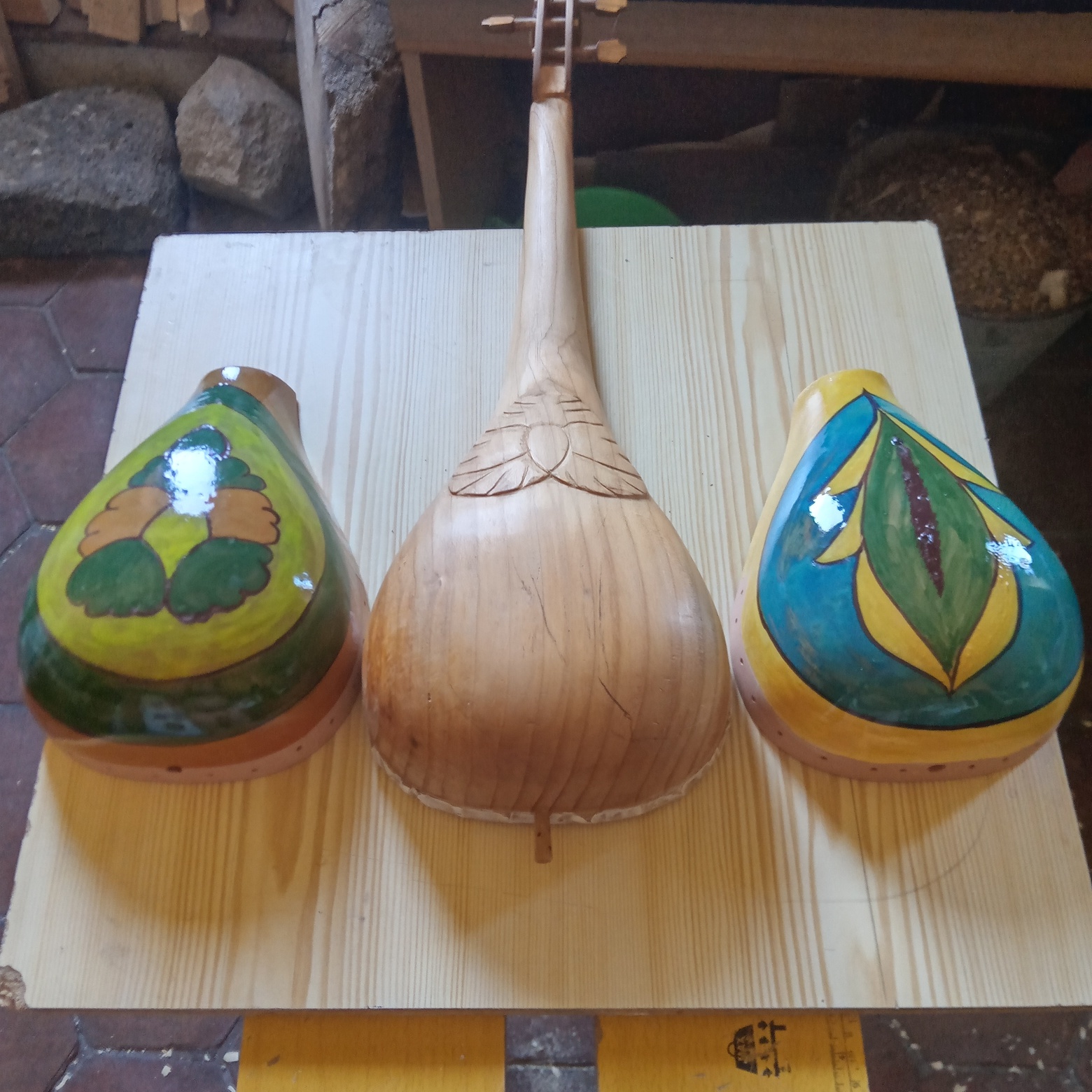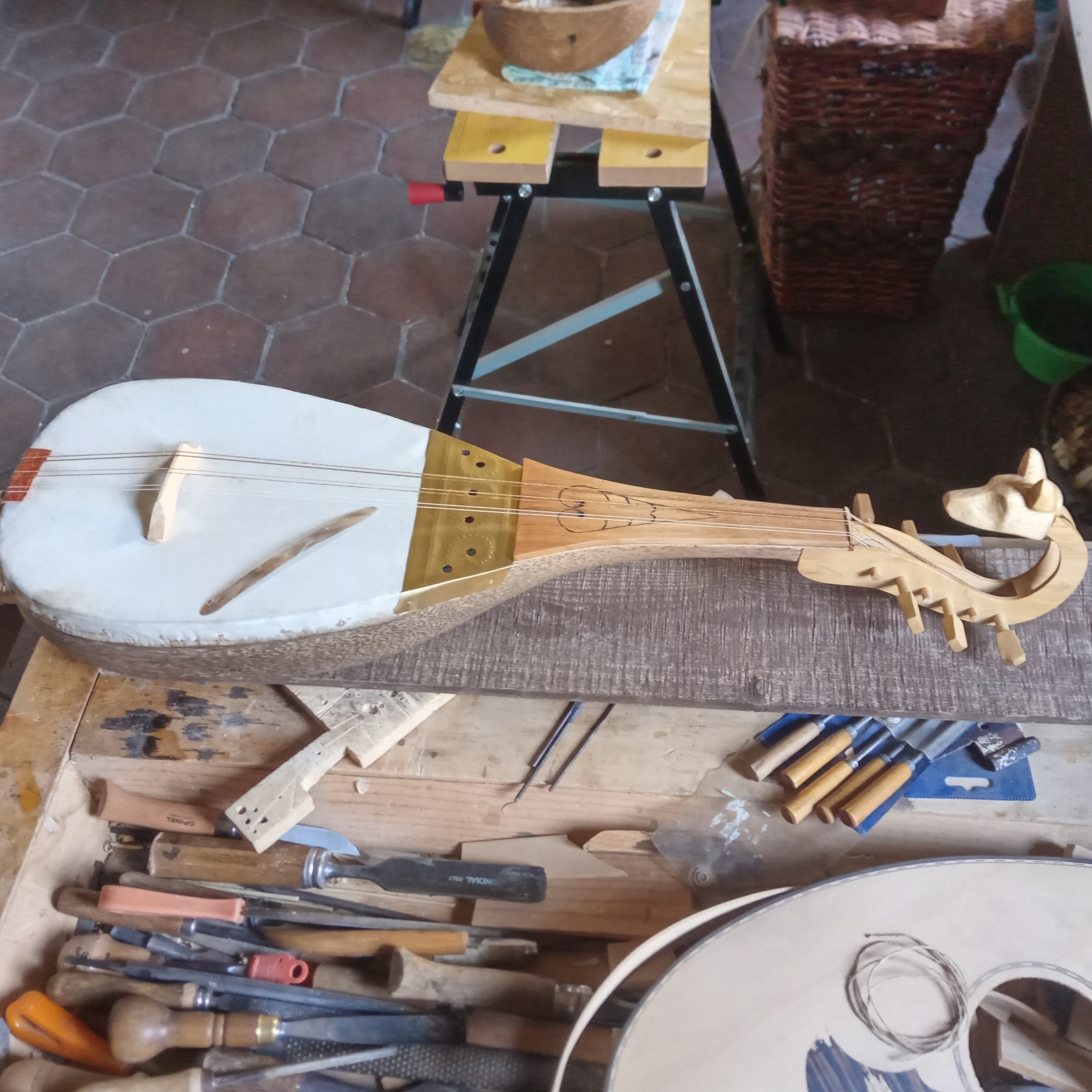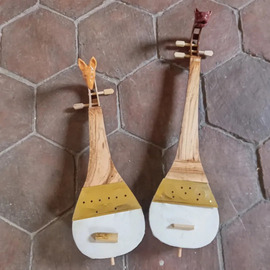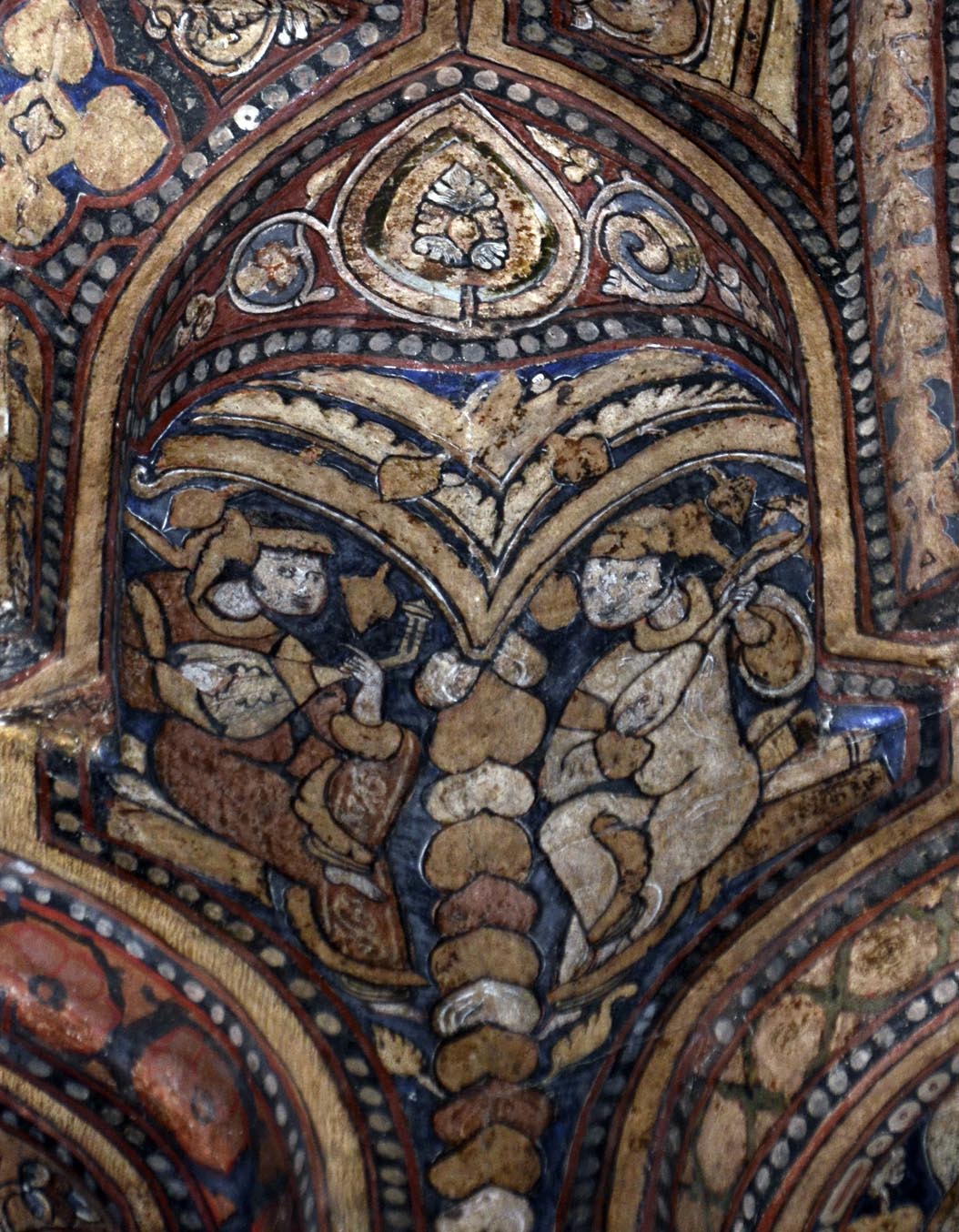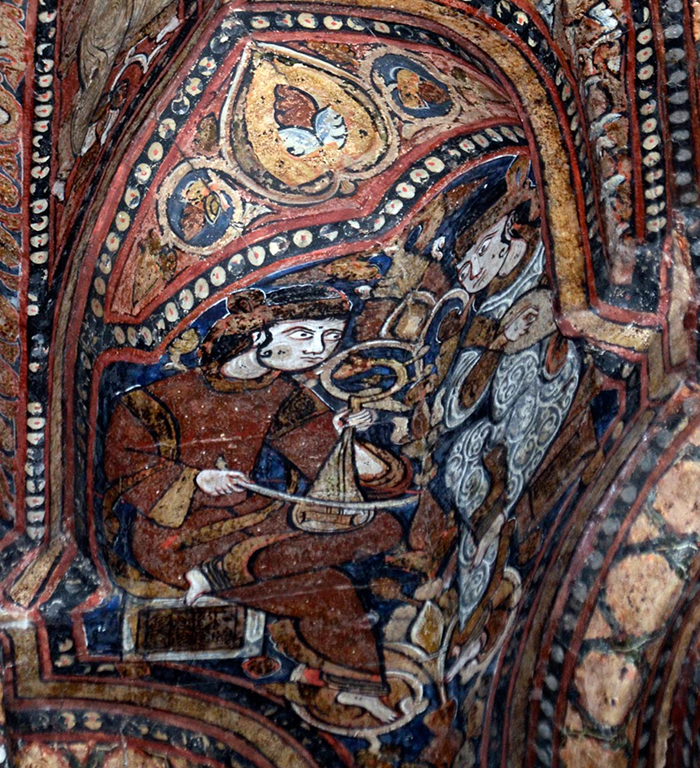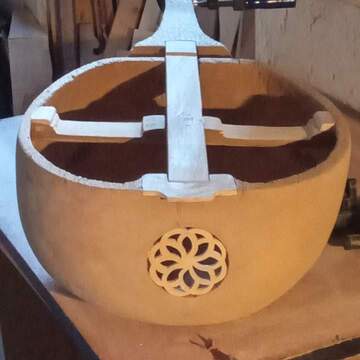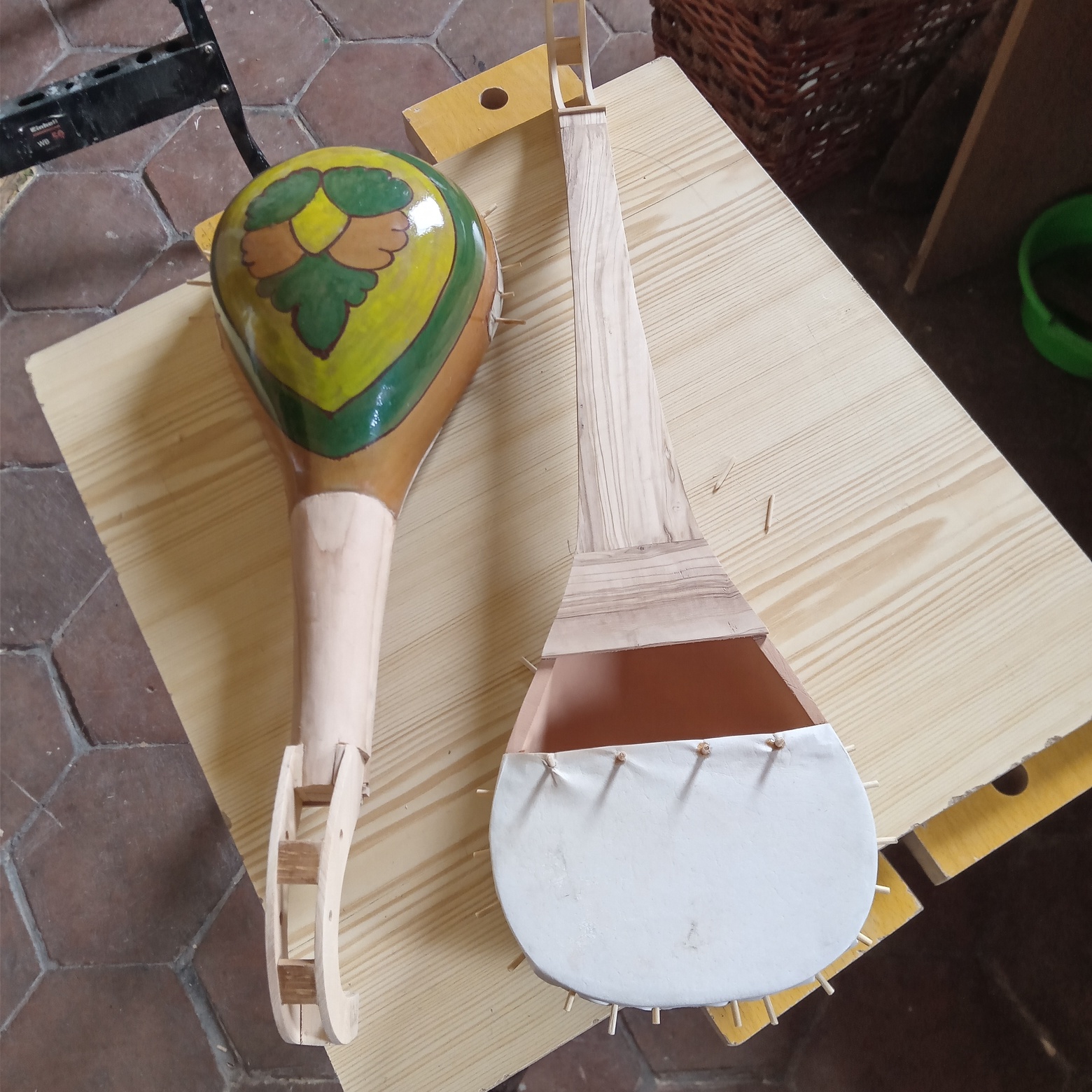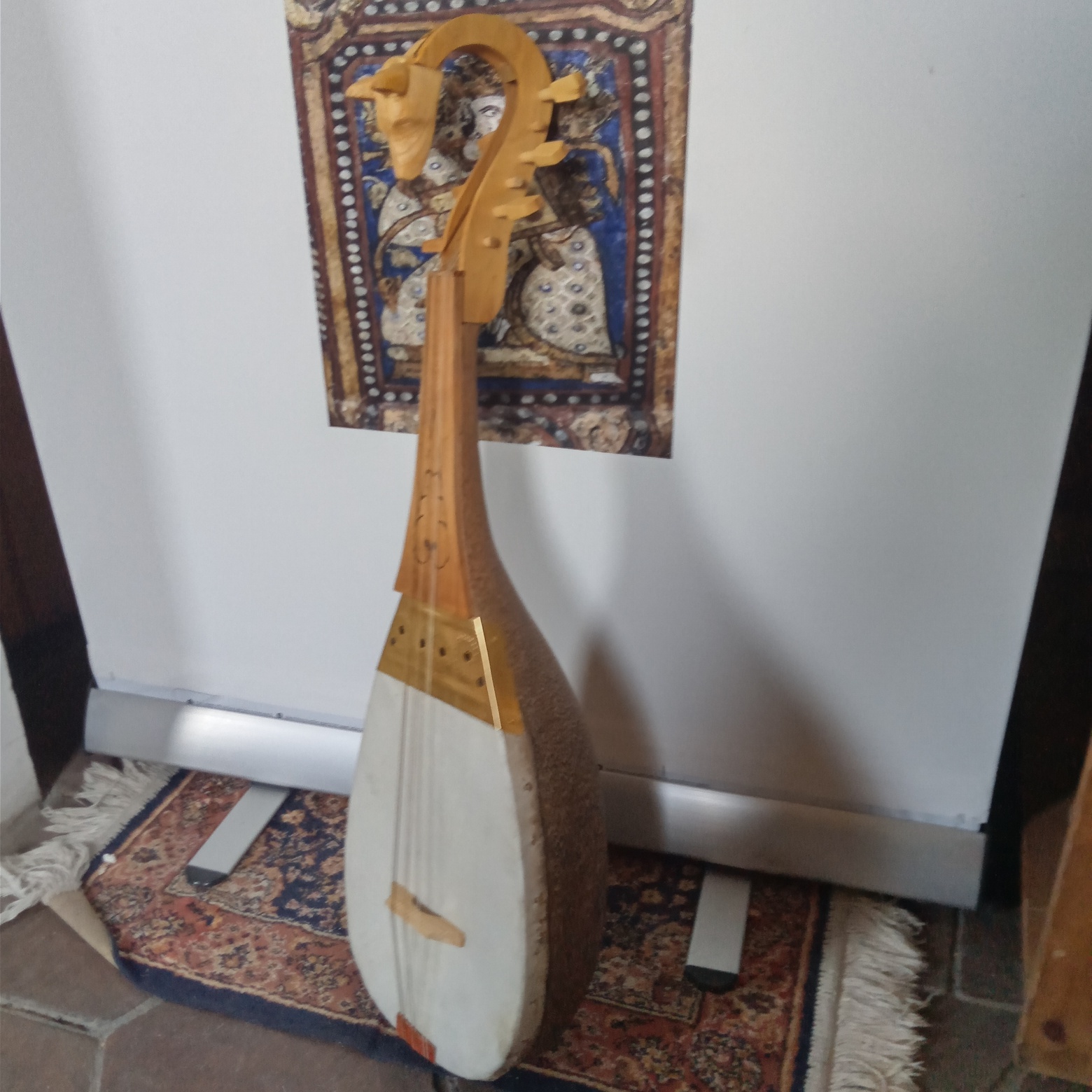Cappella palatina di Palermo. Esposizione permanente degli strumenti musicali ricostruiti: Casa della musica e della liuteria a Randazzo (Catania)
Cappella Palatina di Palermo
Esposizione permanente
degli strumenti musicali ricostruiti:
Casa della musica e della liuteria
a Randazzo (Catania)
I soffitti a muqarnas della Cappella Palatina di Palermo, metà secolo XII, presentano dipinti che raffigurano suonatori e suonatrici di strumenti musicali a corde. Si tratta di Liuti (Oud) di diverse dimensioni e di Rabab, fra i primi cordofoni ad arco introdotti in Europa.
Tutti questi strumenti presentano alcune caratteristiche che li differenziano da quelli dalle altre raffigurazioni coeve note dall’Iran alla Spagna.
La prima è una fascia trasversale di colore generalmente dorato (dove chiaramente osservabile) posta tra la tastiera e la tavola armonica, la seconda è la forma del cavigliere dei Rabab, falciforme e terminante in una testa zoomorfa.
E’ opinione comune fra gli studiosi che negli Oud di quell’epoca la tavola armonica fosse in legno e le casse armoniche costruite in sottili doghe incollate.
Negli strumenti qui presentati si è scelto di sperimentare modalità più arcaiche. Il corpo dello strumento è scavato in un unico blocco di legno di palma (Phoenix canariensis) e la tavola armonica in pelle di capra con i fori di risonanza praticati nella fascia trasversale decorativa in ottone. Le corde sono in budello, i cantini in seta. L’idea di utilizzare il legno di palma, di solito mai usato in liuteria, è stata suggerita dalla presenza di quest’albero nelle pitture della Cappella. I risultati acustici sono soddisfacenti.
I Rabab sono costruiti seguendo due modalità: in legno di cedro (Cedrus libani) e in ceramica. La scelta della ceramica viene dall’osservazione dei dipinti, in cui alle spalle dei suonatori spesso si vedono vasi con la stessa forma e lo stesso colore degli strumenti (la produzione di ceramica invetriata era notevole a Palermo nei secoli X-XII). In ceramica vengono realizzate la cassa di risonanza e la testa decorativa, le rimanenti parti in legno, pelle e ottone. Gli strumenti realizzati interamente in legno sono monoxili, salvo il cavigliere a falcetto, applicato. Le corde sono in budello e in seta. Le taglie sono due: piccolo a due corde, più grande a tre corde. I risultati acustici sono soddisfacenti.
Tutti gli esemplari ricostruiti sono esposti presso la Casa della Musica e della Liuteria a Randazzo, CT e sono ascoltabili, suonati dalle mani del loro stesso autore. Il repertorio consiste in brani individuati nei repertori arabo andaluso, berbero e della tradizione siciliana.
Contatti: tel. +393494001357
Email: This email address is being protected from spambots. You need JavaScript enabled to view it.
